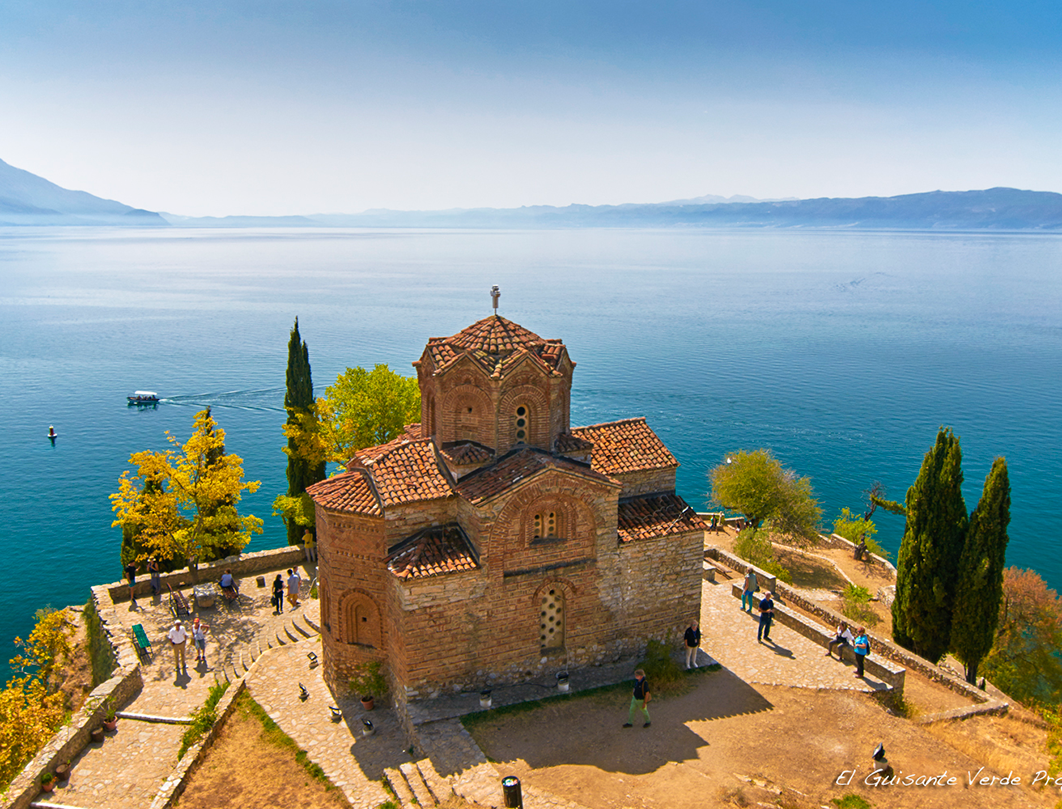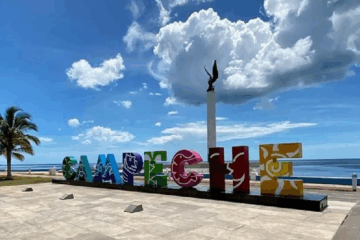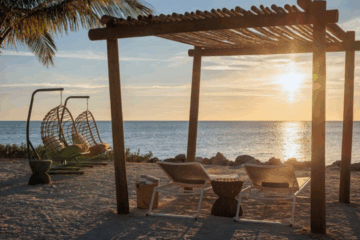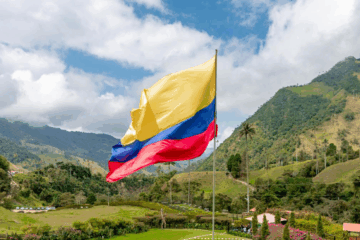Grand Tour of the Balkans
8 Countries, 20 Cities: Croatia, Bosnia, Montenegro, Albania, North Macedonia, Serbia, Bulgaria, Romania
Zagreb | Plitvice | Rastoke | Novi Sad | Belgrade | Sarajevo | Mostar | Medjugorje | Dubrovnik | Kotor | Budva | Kruje | Tirana | Ohrid | Skopje | Sofia | Plovdiv | Veliko Tarnovo | Brasov | Bucharest
Price from: $4,099 USD per person
Date: April 7, 14, 21, 28 • May 5, 12, 2026
Duration: 17 days / 14 nights
| INCLUDES | 17 days / 14 nights International flight Turkish Airlines Mexico – Sarajevo / Bucharest – Mexico
Transfers Airport – Hotel – Airport
Meals: 14 breakfasts,, 12 unches, and 2 dinners (half board) |
| NOT INCLUDED | Tips for guides and drivers Drinks during meals Travel assistance insurance (mandatory) Personal expenses Entrance fees not specified or additional outside the itinerary |
HOTELS
|
NIGHTS |
CITY |
SUPERIOR CATEGORY HOTELS |
|
2 |
ZAGREB |
|
|
1 |
BELGRADO |
|
|
1 |
SARAJEVO |
|
|
1 |
MOSTAR |
|
|
1 |
DUBROVNIK |
|
|
1 |
BUDVA |
|
|
1 |
TIRANA |
|
|
1 |
OHRID |
|
|
1 |
SKOPJE |
|
|
1 |
SOFÍA |
|
|
1 |
VELIKO |
|
|
1 |
BRASOV |
|
|
1 |
BUCAREST |
Hotel International City Center Bucharest 4★
|
|
OCCUPANCY |
PRICE USD |
||
|
Double / Triple |
$ 4,099 USD |
||
|
Single (+supplement) (+suplemento) |
$ 980 USD |
||
|
Child: 2 to 8 years |
$ 3,599 USD |
||
|
Infant: 1 to 23 months |
Air tax |
||
Note:
*Air tax for child (1 to 23 months) approximately $800 USD, to be confirmed at issuance.
*An adult is considered from 9 years of age.
IMPORTANT NOTES:
- Block reserved for 40 passengers.
- For better comfort on this tour, double occupancy accommodation is recommended.
- The exchange rate to be used at all times is the BBVA Bancomer rate at the time of payment. You can check it directly on the BBVA website.
- Bank details: Official account of Corporativo Turístico MOTG SA de CV.
Bank BBVA Bancomer
Account Number
0116234038
Interbank CLABE
012180001162340382
- Forms of Payment: Bank transfer, bank deposit, and cash payment.
- Payment Conditions: Minimum deposit of $500 USD per passenger to confirm reservation, 4 months before departure (120 days), 50% of the reservation must be paid, 2 months before departure (60 days), the total balance must be settled.
- To issue electronic tickets, the following is required: Copy of a valid passport with at least 180 days remaining from the departure date. The passport must be in good condition, free of stains, tears, or water damage; otherwise, boarding will not be permitted.
- It is the responsibility of the travel agency and/or the passenger to review and obtain the required documentation for travel, whether in transit or upon entry to the destination being visited.
- Hotel check-in is at 2:00 PM and check-out at 12:00 PM; early check-in or late check-out requests are subject to availability and may incur an additional charge.
- Itinerary and planned hotels are subject to last-minute changes due to weather conditions, extraordinary circumstances, pandemics, acts of war, or other factors beyond the Operator’s control.
Price and availability subject to change without notice.
If you need more information or want to book, please contact us.
Day 1: MEXICO CITY – ZAGREB
-
Meeting at Mexico City Airport to take the flight to Zagreb. Overnight on board.
Day 2: ZAGREB
-
Arrival in Zagreb. Meet and greet at the airport with the guide. Transfer to the hotel. After check-in, a tour will be conducted through the old town of Zagreb and its main monuments.
-
The history of Zagreb dates back to 1094, and it became the capital of Croatia in 1557. It is often called the city of museums, as it has more museums per square foot than any other city in the world. But this does not mean there is nothing else to do if you are not a history enthusiast. Today, it is a very popular tourist center. The historic part of the city is made up of sections, including the thousand-year-old Upper Town, one of the best-preserved medieval towns in Europe.
Day 3: ZAGREB – PLITVICE – RASTOKE – ZAGREB
-
After breakfast, we will travel to Plitvice where we will enjoy a walk through the lower lakes. This stunning landscape consists of up to 16 magnificent lakes—truly a miracle of nature. We then continue to Rastoke, a picturesque village in Croatia, known as the “Little Plitvice” for its incredible scenery of waterfalls, watermills, and rivers intertwining with the town. Rastoke is the historic center of the Croatian municipality of Slunj. This old part of Slunj is known for its well-preserved mills and charming small waterfalls along the Slunjčica River. Rastoke is considered a site of ecological and ethnographic importance due to its symbiosis of natural features and human civilization. Return to Zagreb for overnight stay.
Day 4: ZAGREB – NOVI SAD – BELGRADE
-
Breakfast. Departure to Novi Sad, the capital of Vojvodina, where we will visit some of the city’s most important sites: Liberty Square, the Town Hall, and the Catholic Church.
-
Hay muchas leyendas sobre la fundación de esta ciudad. Desde tiempos prehistóricos, muchas naciones han vivido en esta área. La fortaleza de Petrovaradín, que es el símbolo de la ciudad, data de la Edad Media, pero fueron los austro-húngaros quienes le dieron el aspecto que tiene hoy.
-
We continue to Belgrade and begin our visit to the Serbian capital, walking through the most important streets of Belgrade, passing along Knez Mihajlo Street toward the Ethnographic Museum and the Bajrakli Mosque. We then continue to the Youth Park to reach the Kalemegdan Fortress.
-
Belgrade, one of the oldest cities in Europe and the only one built at the confluence of two rivers, is known as the city that never sleeps and is a symbol of vibrant nightlife. It is a modern European city with a population of approximately 1.7 million people, and it serves as the administrative, political, and cultural center of the country.
-
All the peoples who have lived here, along with the armies that passed through Belgrade, have left their marks on the city, such as: the magnificent Victor Monument, the remains of Belgrade Fortress, the Istanbul Gate, the Old Palace, and more. Overnight in Belgrade.
Day 5: BELGRADE – SARAJEVO
-
After breakfast, we will travel to Sarajevo. Upon arrival, we will wander through its charming neighborhoods of Ottoman and Austro-Hungarian style. We will visit the Gazi Husrev Bey Mosque, the Latin Bridge, the Old Town, the Town Hall, the antique market, the Tunnel of Hope Museum, and once again the Gazi Husrev Bey Mosque.
-
Sarajevo was first mentioned in 1477. A very significant stage in the city’s development is marked by the rule of Gazi Husrev Bey. From this period onward, Sarajevo expanded territorially and acquired many valuable landmarks. In early 1992, Sarajevo became the capital of the independent, sovereign, and internationally recognized state of Bosnia and Herzegovina. During the years of siege and war (1992–1995), Sarajevo suffered heavy losses in both human and material potential. However, since the end of the war, Sarajevo has been steadily regaining its beauty and splendor. Overnight stay in Sarajevo.
Day 6: SARAJEVO – MOSTAR
-
Breakfast and departure towards Mostar, best known for its famous bridge. The Old Bridge, from which the city takes its name, is one of the finest examples of Ottoman ingenuity and Dalmatian stone masonry in the Western Balkans.
-
Mostar quickly became a commercial center of the region thanks to the Neretva River. The city is world-renowned for its iconic bridge. The Old Bridge was built by the Ottoman Empire in 1565.
-
It was the great architect Mimar Hajrudin who accomplished the seemingly impossible mission of crossing the Neretva River with a single-span stone bridge. Mostar got its name from this very bridge—or, more precisely, from its guardians. They were known as the Mostari, and they used to watch over the bridge. As Nobel Prize winner Ivo Andrić once wrote: “When you spend a night in Mostar, it is not the sound that wakes you in the morning, but the light. I know this from my own experience. It was the light that welcomed me when I arrived, followed me from morning until night, and when I left, that light stayed with me forever as the defining feature of my memories of Mostar.” Overnight in Mostar.
Day 7: MOSTAR – MEDJUGORJE – DUBROVNIK
-
In the morning, we cross the border into Bosnia to arrive in Medjugorje, the most popular pilgrimage site in the region. Medjugorje: Since 1981, it has become a renowned Catholic pilgrimage destination due to Our Lady of Medjugorje—a series of reported apparitions of the Virgin Mary to six local children, which are said to continue to this day. At the top of the hill, just twenty meters from where the second apparition occurred on June 25, 1981, stands a white marble statue of the Virgin Mary. In the heart of this small village, the Church of St. James, with its two striking towers, stands out as a landmark for pilgrims worldwide.
-
After this visit, we continue our journey to the city of Dubrovnik. Upon arrival, we will explore the Old Town and its most important landmarks. Dubrovnik, rich in cultural and historical monuments, is listed as a UNESCO World Heritage Site. The city’s most recognizable feature is its intact medieval walls, stretching unbroken for 1,940 meters, completely encircling the old city.
-
By the 15th century, Dubrovnik had become Venice’s main rival for control over Adriatic maritime routes. The city took its present form after the devastating earthquake of 1667, yet it has managed to preserve its magnificent Gothic, Renaissance, and Baroque churches, monasteries, palaces, and fountains. Overnight in Dubrovnik.
Day 8: DUBROVNIK – KOTOR – BUDVA
-
After breakfast, we continue our journey to the city of Kotor, a UNESCO World Heritage Site. We will enjoy the breathtaking scenery where the mountains meet the sea. The views of the bay are simply stunning, and the Old Town is charming with its narrow streets, historic churches, and fortress offering spectacular panoramas from above.
-
Kotor is located in the most beautiful bay of Montenegro. Once a city of merchants and sailors, it has many fascinating stories to tell. The Old Town of Kotor is an exceptionally well-preserved example of a medieval city, built between the 12th and 14th centuries. Within its walls, visitors can enjoy local crafts, souvenir shops, and cozy terraces perfect for a drink while soaking up the atmosphere. We will then continue to explore the Old Town of Budva, one of Montenegro’s most popular holiday destinations.
-
Budva is considered the country’s vacation capital thanks to its many beaches. Its Old Town stretches across a small peninsula and is a true cultural treasure. Most of the architecture reflects the Venetian style. The old quarter, known as Stari Grad, is a lively hub where Mediterranean-style streets and squares unfold within medieval walls and 15th-century bastions. Overnight in Budva.
Day 9: BUDVA – KRUJE – TIRANA
-
After breakfast, once we cross the border, we head to the historic city of Kruja, known for being the center of anti-Ottoman resistance during the 15th century. This mountainous city is dominated by a 15th-century citadel, which we will visit. Kruja is also renowned for its traditional Ottoman bazaar and the Ethnographic Museum, both included in our tour.
-
Kruja, after surviving thousands of years, nearly disappeared in the early 20th century but has experienced a revival over the past 50 years. It is a major tourist attraction with spectacular mountain views. The highlights of the city are the fortress with its citadel and the traditional bazaar. The Skanderbeg Museum (dedicated to the city’s hero who fought for 25 years against Ottoman invasions in the 15th century) and the Ethnographic Museum are the most famous attractions here. The ancient bazaar is a typical oriental market offering all kinds of antiques and handicrafts made by local artisans.
-
After visiting Kruja, we continue to Tirana, where we will explore the main landmarks: the city center with the Et’hem Bey Mosque and the famous Atomic Bunker, built by the former dictator as protection against a potential foreign attack.
-
Tirana, the capital and largest city of Albania, offers a wide variety of activities, museums, and monuments to explore. Most of Tirana’s museums and monuments are located around Skanderbeg Square and along the main avenue, Martyrs of the Nation. The oldest archaeological find in Tirana is a Roman house, later transformed into a church, featuring decorative floor mosaics dating back to the 3rd century AD.
-
Modern Tirana was founded as an Ottoman town in 1614 by Sulejman Bargjini, a local governor of Mullet. It became the capital of Albania in 1920 and has a population of nearly one million. The city hosts public institutions, universities, and serves as the political, economic, and cultural center of the country. Overnight in Tirana.
Day 10: TIRANA – OHRID
-
Breakfast followed by departure to Ohrid. The entire day is dedicated to exploring the main monuments of the city, including St. Sophia Cathedral and the Church of St. Clement. After the visits, we will take a boat ride to enjoy views of the city from the water.
-
Ohrid is a city that stretches along a hill overlooking the lake. The beauty of Lake Ohrid and the city’s historic architecture are protected as a UNESCO World Heritage Site. The city as it stands today was largely built between the 7th and 19th centuries. At the beginning of the 11th century, Ohrid became the capital of the Slavic kingdom led by King Samuel, whose fortress still dominates the city hill today. At its peak, the city was famous for its 365 churches and monasteries. Overnight in Ohrid.
Day 11: OHRID – SKOPJE
-
Breakfast. followed by departure to Skopje, the capital of North Macedonia, for a city tour highlighting its most important monuments. We will visit the city fortress and the birthplace of Mother Teresa of Calcutta.
-
Skopje is the capital and offers a wealth of attractions. The Stone Bridge over the Vardar River connects the old Ottoman part of the city, Stara Čaršija, and the Fortress with the modern city center. Of particular interest is the new Macedonia Square, featuring a massive statue of Alexander the Great, surrounded by figures of historical characters, national heroes, and prominent personalities of the country, all represented in statues of various sizes. In the small cobblestone streets, you can feel the spirit of the old Ottoman city, with its quaint shops, mosques, cafés, and traditional restaurants.
-
From the fortress, city governors once had a commanding view of the city and its surroundings. Overnight in Skopje.
Day 12: SKOPJE – SOFIA
-
Breakfast. followed by transfer in the morning to Sofia, the capital of Bulgaria. Upon arrival, we will begin a city tour to visit its main monuments.
-
We start our tour of the Bulgarian capital with visits to Alexander Nevsky Orthodox Cathedral, Sveta Nedelia Square, the Roman Rotunda of St. George, dating from the 4th century and one of the oldest in Europe, as well as the churches of St. Nicholas, St. Petka, and St. Sofia. Other highlights include Climent Ohridski University, the National Art Gallery (former residence of the tsars), and the Ivan Vazov National Theatre. Entrance fees are included for Alexander Nevsky Cathedral and the National Art Gallery. Overnight in Sofia.
Day 13: SOFIA – PLOVDIV – VELIKO TARNOVO
-
Breakfast. followed by transfer to Plovdiv, selected as the European Capital of Culture in 2019. We will enjoy a walking tour of the city’s historic center. Plovdiv is one of the oldest cities in Europe, with archaeological evidence of settlements dating back to the Neolithic era. In the Old Town, we can admire houses from the 17th–19th centuries, masterpieces of the Bulgarian Renaissance. We will visit the Church of Constantine and Helena, the Ethnographic Museum, and the ancient Roman theatre, built in the 2nd century AD during the reign of Trajan—a prime example of Roman art in Plovdiv.
-
We then continue to Veliko Tarnovo, where we visit the former Royal Fortress of Tsarevets, Samovodska Street, and the Samovodene Crafts Market. Veliko Tarnovo, the medieval capital of the Second Bulgarian Empire, is undoubtedly one of the most beautiful and picturesque cities in the country. Its unique natural setting, perched on the slopes of several hills crossed by the Yantra River, along with its medieval fortress and well-preserved Old Town, make it a remarkable destination. Overnight in Veliko Tarnovo.
Day 14: VELIKO TARNOVO – BRASOV
-
After breakfast, we continue towards the Romanian border to reach Brașov, passing through Bucharest, and visit the Black Church.
-
Brașov is one of the most visited cities in Romania due to its abundance of historic sites and beautiful monuments, ranging from Gothic to Baroque and Renaissance styles.
-
One of the most remarkable landmarks is the Black Church (Biserica Neagră), the largest Gothic church in Romania. It was built between 1383 and 1477 and was largely destroyed during the first Turkish invasion in 1421. Its current name comes from a fire in 1689 that blackened its walls. The interior is stunning, featuring Gothic-style porches, Baroque galleries, statues, murals, and seating from the 17th and early 18th centuries. Overnight in Brașov. Fue construida entre 1383 y 1477, y destruida en gran parte tras la primera invasión turca en 1421, y el nombre que tiene actualmente se debe a un incendio que tuvo lugar en 1689 que dejó ennegrecidas las paredes. El interior es de una gran belleza, con sus pórticos de estilo gótico y las galerías de estilo barroco; las estatuas, la pintura mural y los asientos del siglo XVII y primera mitad del XVIII. Alojamiento en Brasov.
Day 15: BRASOV – BUCHAREST
-
Breakfast. We will visit Dracula’s Castle, also known as Bran Castle. It was built by the Saxons in 1377, under privileges granted by King Louis I of Hungary.
-
Despite its solid, fortified appearance, Bran Castle witnessed few bloody events and had limited military importance. It was only permanently inhabited during the 1920s and 1930s, serving as a summer residence for Queen Marie of Romania. Popular belief holds that it was once the home of Vlad Tepes (Vlad III Drăculea), voivode of Wallachia, the historical figure who inspired Bram Stoker’s Dracula. novela Drácula.
-
However, there is no evidence that Stoker knew anything about this castle, which only has tangential connections to Vlad Tepes. After the tour, we continue to Bucharest. Arrival and check-in at the hotel. Dinner and overnight stay. Terminando el tour continuamos hacia Bucarest. Llegada a Bucarest. Check in al hotel. Cena y aojamiento.
Day 16: BUCHAREST – MEXICO CITY
-
Breakfast. A la hora indicada salida para At the scheduled time, we will embark on a full city tour of Bucharest, visiting the main landmarks in the Old Town, the Palace of the Parliament, and the Stavropoleos Church. We will also see other key attractions such as the Parliament, the Court, the Arch of Triumph, Revolution Square, and more.
-
Since the 15th century, Bucharest has been a meeting place for merchants and travelers. The city survived the regime of former dictator Nicolae Ceaușescu, who demolished one-fifth of the city to build what he envisioned as a new socialist capital. Free time follows. Overnight in Bucharest. At the end of the tour, transfer to the airport for the return flight.
END OF OUR SERVICES
HAPPY RETURN!
Traveler Assistance
Duration: 17 days
Traveling is one of the most enriching experiences, but it can also bring unexpected situations. From losing a suitcase to facing a medical emergency, having the right protection makes all the difference.
Our travel assistance offers clear advantages:
- Immediate attention, wherever you are.
- National and international medical coverage and extras (lost luggage, delays, legal assistance).
- 24/7 support in your language.
Exclusive benefits with Universal Assistance include:
- UNI, a virtual assistant that helps you with inquiries about your coverage.
- TravelTips by ChatGPT, an innovative tool with personalized travel advice.
Extended and flexible coverage, tailored to the needs of each destination and type of traveler.
COVERAGE WITH RATE
| EXCELLENCE | Complete Coverage | 150,000 USD | 12 USD (daily) |
| MAXIMUM | Premium Coverage | 300,000 USD | 15 USD (daily) |
| EXCLUSIVE | Top Coverage | 500,000 USD | 19 USD (daily) |
From age 71, the rate increases by 50%; over age 85, the increase is 100%
If you require more information, please contact us. Thank you.
Contact





